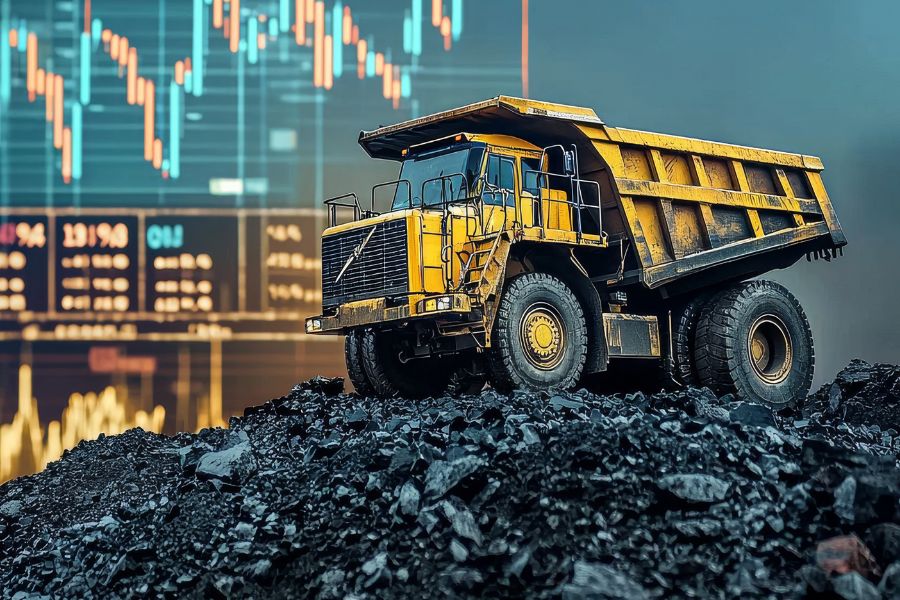Why the Bank Trade Looks Exhausted
The 2024 bank rally reflected a perfect storm: the RBA held rates at 4.35% throughout the year rather than cutting as expected, preserving net interest margins driving profitability. Credit quality remained surprisingly benign despite elevated rates. Investors seeking defensive yield piled into banks offering 4-6% fully franked dividends with apparent stability.
Commonwealth Bank now trades at approximately 19-20x forward earnings—roughly double comparable international banks and nearly 50% above the ASX financials average. Even other majors trade at 12-14x earnings, reaching or exceeding historical averages. These valuations embed expectations for continued margin strength, sustained 65-75% payout ratios, and benign credit conditions. There's little margin for error.
The catalysts driving 2024 outperformance are reversing. The RBA's September 2025 pause at 3.60% extended the favorable environment temporarily, but major banks now forecast rate cuts resuming in February 2026. As the cutting cycle restarts, margin compression becomes inevitable. Even bulls acknowledge banks must rely entirely on volume growth to drive earnings as margins face pressure from both declining lending rates and deposit competition.
Credit quality risks are building beneath the surface. Mortgage arrears have doubled from trough levels to 1.6-1.8%, and commercial real estate shows stress as office vacancy climbs amid permanent hybrid work adoption. While current provisioning remains light, any labour market weakness could rapidly shift narratives from margin strength to asset quality concerns.
Materials Sector: Reset and Ready
While banks extended valuations, materials stocks suffered a grinding bear market driven by China's structural challenges. The property sector—historically driving 25-30% of global commodity demand—entered permanent decline as the development-driven growth model reached limits. Iron ore fell from $145/tonne in early 2024 to hover around $100 by mid-2025. Lithium collapsed from peaks near $6,000/tonne to below $1,000/tonne.
The market's response was severe. BHP declined 20% from 2024 peaks despite maintaining world-leading iron ore costs and substantial copper exposure. Smaller miners saw devastation—lithium producers like Pilbara Minerals fell 40-60% as prices cratered.
This extended decline has reset valuations to extremes. Major miners now trade at 4-6x EV/EBITDA versus historical bull market levels of 6-8x and current bank multiples of 7-9x. BHP trades near $40 at less than 12x earnings while generating $8+ billion annual free cash flow, maintaining fortress balance sheets, and offering 6%+ fully franked yields. Markets price these portfolios as if commodity prices remain depressed indefinitely—increasingly unlikely given emerging catalysts.
China Stimulus: From Skepticism to Cautious Optimism
The catalyst triggering materials re-rating is coming into focus: China's stimulus measures show signs of gaining traction after months of disappointment. Recent announcements include $500+ billion infrastructure spending, monetary easing through reserve requirement cuts, property sector support with relaxed purchasing restrictions, and consumer stimulus for appliances and vehicles.
Leadership tone has shifted from emphasizing deleveraging to stressing growth stabilization and meeting the 5% GDP target. This suggests policymakers recognize risks of excessive deceleration and will deploy stimulus preventing hard landing.
For commodity markets, the question isn't whether China achieves 5.0% or 4.5% growth—it's whether growth stabilizes rather than continuing to decelerate. Even modest stabilization supports commodity demand and prevents further price declines.
Consider iron ore economics: at $100/tonne, BHP and Rio Tinto remain profitable with all-in costs around $30-40/tonne, but margins are compressed. If stimulus drives steel production higher and pushes iron ore to $110-120/tonne, margins expand dramatically. A producer with 250 million tonnes sees revenue increase $2.5-5 billion from a $10-20 price increase, with nearly all flowing to EBITDA given stable costs. This operational leverage explains why mining stocks outperform commodities by 2-3x during recovery phases.
Beyond China: Structural Tailwinds
While China represents the primary catalyst, several structural factors support higher commodity prices independent of Chinese growth.
Electrification requires 400-500% more copper by 2040 versus current consumption. EVs contain 4x the copper of combustion vehicles. Renewable infrastructure uses copper extensively. Yet mine development has slowed drastically, with major discoveries rare and lead times exceeding 10-15 years. This supply-demand imbalance should support structurally higher prices, benefiting diversified miners like BHP where copper represents 30% of revenue.
Lithium, while oversupplied short-term, should see demand growth resume as EV penetration accelerates beyond 20% globally. Australian miners with lithium exposure have been devastated—Pilbara Minerals fell from $5.00 peaks to $2.50—yet maintain profitable low-cost operations and strong balance sheets. If lithium stabilizes at $1,000-1,200/tonne, well below peaks but above marginal costs, Australian producers could see 50-100% share price appreciation from multiple re-rating alone.
Global infrastructure spending supports commodity demand too. India targets $1.4 trillion infrastructure spending by 2030. Southeast Asia expands transportation networks. US infrastructure bills and Inflation Reduction Act channel hundreds of billions into manufacturing and clean energy. While no region replaces China's historical dominance, collectively these programs support commodity prices independent of Chinese growth.
Portfolio Positioning for the Rotation
High-quality core holdings: BHP and Rio Tinto offer lowest-risk exposure. BHP's diversification across iron ore, copper, coal, and potash means benefits from commodity recovery across multiple fronts. Rio provides concentrated iron ore exposure with aluminum diversification. Both trade at 10-12x earnings with 6-7%+ fully franked yields—similar income to banks with greater capital appreciation potential if commodities strengthen.
Higher-beta opportunities: Fortescue Metals offers pure-play iron ore exposure with 8-10x earnings and yields exceeding 8-10%. The company's lower-grade ore and higher cost base create operational leverage—amplifying iron ore price movements in both directions. Appropriate for aggressive allocations but too volatile for conservative investors.
Diversification beyond iron ore: South32 provides base metals exposure through aluminum, manganese, copper, and nickel operations. Trading at 8-9x earnings with 4-5% yields, it offers materials beta beyond iron ore concentration while maintaining quality balance sheet and disciplined capital allocation.
Implementation Strategy
Trim bank positions from overweight to neutral over 2-3 quarters, simultaneously building materials exposure using dollar-cost averaging. This captures rotation upside while reducing timing risk. Focus materials allocation on BHP and Rio (60-70% of materials allocation), with smaller positions in Fortescue or South32 (20-30%), and potentially satellite lithium exposure for aggressive investors (10% maximum).
Maintain total equity allocation constant while shifting sector mix. As banks pay dividends, redirect to materials purchases rather than reinvesting in financials. This avoids explicit selling to minimize tax events while gradually repositioning.
The Bottom Line
Valuation disparity creates opportunity: banks at 12-20x earnings after 40% gains offer limited upside; materials at 4-6x EV/EBITDA after 18-month downturn provide asymmetric returns if commodities stabilize. China's policy shift from deleveraging to growth support suggests stabilization rather than continued deceleration, supporting commodity demand floor.
Mining stocks historically outperform commodities by 2-3x during recovery phases due to fixed cost structures—modest iron ore recovery from $100 to $120/tonne could drive 20-30% earnings growth for producers. Income investors can rotate without sacrificing yield: BHP and Rio offer 6-7%+ fully franked yields matching or exceeding banks, providing income plus capital appreciation potential.
The rotation from banks to materials isn't guaranteed or imminent, but the setup has rarely been more compelling. Banks have delivered for shareholders but now price in optimistic scenarios with limited upside. Materials have endured sufficient pain to create value, with catalysts emerging that could trigger re-rating.










